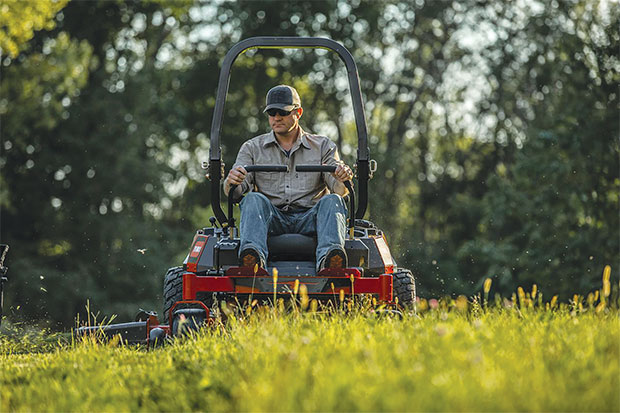Do you just love watching wildlife in the backyard through your kitchen window? If you want to attract more wildlife, there are a number of things you can do to make your land more attractive.
Whether you own a hobby farm, a ranch or a few acres of land that you’d like to keep wild, according to the yardcare experts at Toro, manufacturer of the high-quality, reliable zero turn mowers built to mow big acreage, the key to attracting more wildlife to your property is to better understand the wildlife you want to attract and their habitat needs, which includes a consistent food supply, clean water and places to hide from predators or to nest.
In other words, leaving your land wild is not enough. Follow these tips from the folks at Toro to make your land more inviting for birds and more.
1 CULTIVATE BUFFER ZONES NEAR WATER SOURCES
Clean drinking water is essential to wildlife of all types. If there’s a stream, pond or lake that connects with your property, create buffer areas where you allow grasses, weeds, shrubs and trees to grow wild. Buffer areas reduce runoff from your yard, including lawn chemicals, mud, lawn clip pings, etc., from entering the water, which can pollute water sources and accelerate algae growth.
2 CREATE FOOD PLOTS To attract more wildlife to your land, consider dedicating a portion of your land to planting food that wildlife like to eat, such as corn, soybeans, clover, alfalfa, grains and even pumpkins. Don’t forget to remove rocks and debris from your food plots, which can potentially damage a mower’s blades.
3 CREATE AN ACCESS TRAIL
Animals, like humans, can have difficulty navigating thick undergrowth and woody areas. To make it easier for wildlife to move around, clear a trail for them near habitat that also allows them to hide quickly should a predator be close by. If your land is fenced in, consider creating spots within the fence that allow certain types of wildlife to enter.
4 MOW FOR BETTER WILDLIFE HABITAT
First, check with your local municipality about ordinances regarding mowing requirements and the management of weeds. For wildlife-friendly yards, maintain a grass height of 3 inches. A Toro Titan zero-turn mower can be easily adjusted for precise cutting. For field areas, rotate mowing over a three-to-five-year period to control the growth of native shrubs and tree saplings. Designate blocks of field or meadow or wide strip areas that you won’t mow during the spring and summer when birds and other desirable wildlife are nesting.
5 CREATE HIDING AND NESTING SPOTS
Use branches, grass clippings, mulch and other materials to create specific spots on your land where wildlife can hide or nest. Plant shrubs and tall grasses near food plots to provide cover for wildlife. For example, if you need to take down a tree, strategically place the branches into brush piles throughout your property to create hiding and nesting spots. Likewise, fish need protective habitat, too. Where permitted, consider sinking rocks, boulders, logs and discarded Christmas trees in water that is out of the way of boating navigation channels.
6 BEE FRIENDLY Consider not mowing and delay clearing leaves during that transition time between spring and summer when bees are at their most vulnerable as they come out of winter hibernation. In addition, leave fall leaves until it warms up outside. Leaves serve as habitat for mice, snakes, worms and small lizards, which other wildlife desire.
7 HAVE THE RIGHT TOOLS TO DO THE JOB
Managing your land to more effectively attract wildlife is a big job that requires the right tools. For taking care of more than an acre of land, use a zero-turn mower that will cut your mow time significantly. Toro also offers a60-volt line of battery-powered equipment that not only has the power to trim shrubs and trees, but also to work quietly. Battery-powered tools like Toro’s 60-volt pole saw or chainsaw can help you get the job done right.
8 PLANT NUT AND FRUIT TREES
Many types of wildlife rely on the nuts and fruits produced by trees. And because food plots can take a lot of time, some deer hunters prefer to plant orchards of fruit — and nut-bearing trees, which also provide habitat for birds. Consider planting Dunstan chestnut, white oak, apple, pear and persimmon trees.
To learn more about how to tame your land, visit toro.com/zeroturn.
This article is courtesy of Brandpoint.
